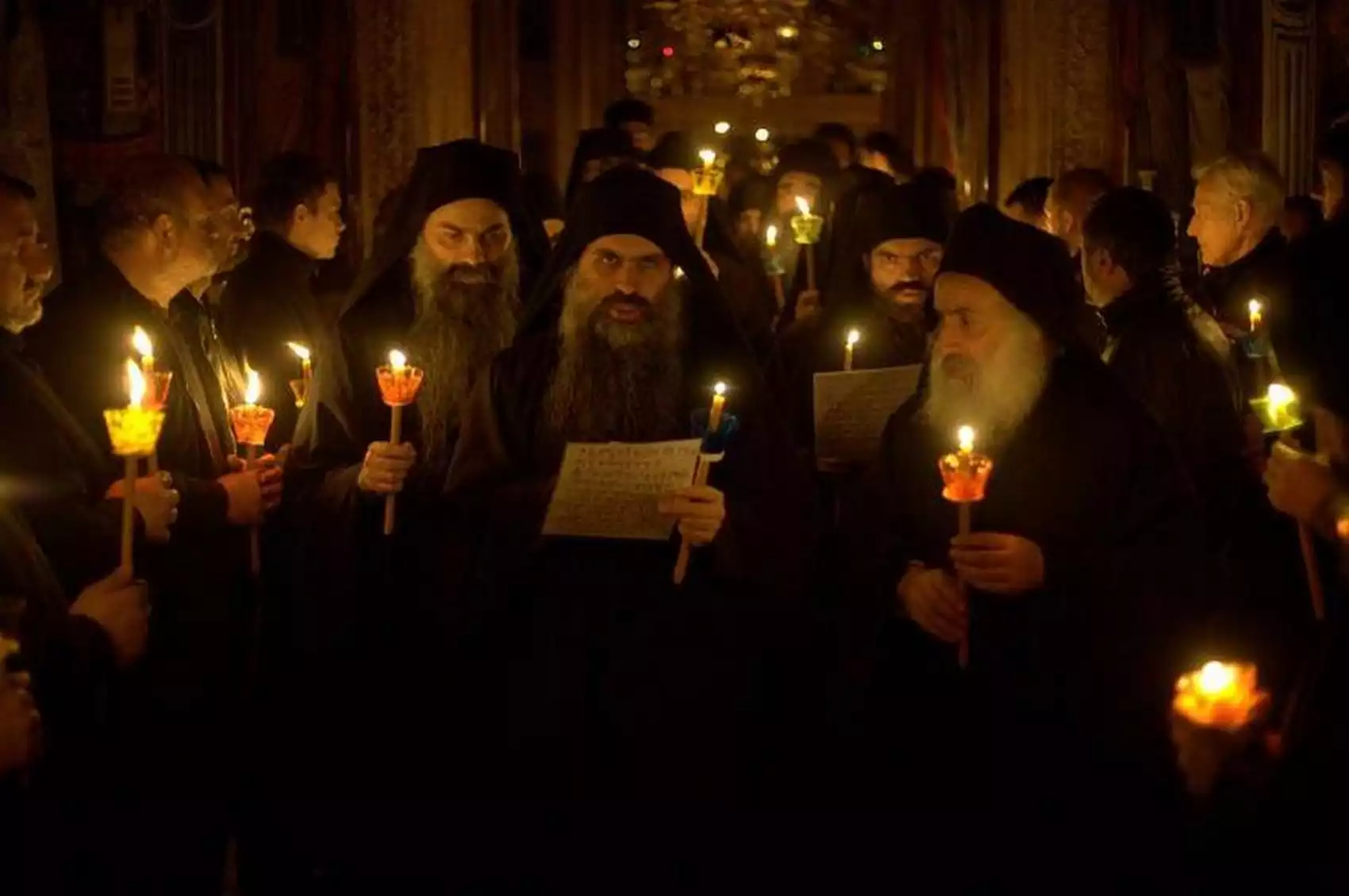
First emerging between the 4th and 5th centuries, the Troparion became a cornerstone of Byzantine liturgical practice over the coming eras. Deriving its name from the Greek word “tropos” denoting “a way or manner,” these short ecclesiastical hymns of primarily triumphal character serve varied functions in Orthodox ritual. Though the earliest Troparia have been lost, the compositions epitomized by figures like Cyril of Alexandria and Anatolius established this hymn’s seminal place in Byzantine worship.
The Genesis of the Troparion
Shrouded in the mists of antiquity, pinpointing the precise origins of the Troparion proves no simple task. Sparse documentary evidence from the early Byzantine world offers mere fragments illuminating when these ecclesiastical hymns first echoing in basilicas. Yet glimmers emerge in the shadows. As legends hold, symphonies of Troparia resonated in the great cathedrals of Constantinople even as early as the fourth century through trailblazers like Bithynian Bishop Anthimos. But more substantial traces first surface in the following century through hymnist Timokles, who apparently trained in the musical arts under authority of the capital’s imperial court.
Though their earliest exemplars perished, testaments to their pioneering efforts persevere. For instance, chronicler John of Damascus preserved specifics on Timokles’ life while applauding technical mastery of his Troparia. Such accounts underscore not only the antiquity of this musical form but confirm Continuous refinement across generations of composers. And within the next hundred years, the Troparion’s role within formal Byzantine ritual solidified through integrations into the burgeoning canon of ecclesial hymnography shepherded by vaunted composers and theologians like Romanos and Cosmas.
So as the Troparion’s usage crystallized over centuries, its flexible poetic structure also spawned diversifications as creative Cantors tailored it to sundry purposes, establishing the foundations for the multifaceted liturgical and musical roles inhabited by this hymn today. But through its protean evolution, the resonant echoes of those early Troparia still permeate every variationderived from that seminal Byzantine musical tradition exploring the myriad “ways,” inherent in its name.
The Protean Troparion: Exploring the Many Liturgical Variations of a Seminal Hymn
Just as the Troparion itself continuously evolved since its Byzantine genesis, the eclectic liturgical forms this hymn adopted also burgeoned over centuries of innovation. But through its protean transformations, several overarching categories classify the myriad species spawned.
The most foundational designation denotes whether a given Troparion has its own unique melody or instead mimics that of another hymn. The former autonomous category includes idiomela and heirmoi, while the latter prosomoia class adapts the melody of a prototypical Troparion. Building further taxonomic branches, Troparia also answer their specific ritual purpose. Hence Kathismata accompany particular psalm verses, stichera punctuate vespers, and eothina glorify the dawn. Special designations also indicate certain ceremonial moments like the cherished hymn “Only Begotten Son” prefacing the Great Entrance.
Equally varied are Troparia centered on particular themes, from aposticha commemorating martyr saints to stavrotheotokia exalting the holy cross and mother of God. Then for major feasts, composers interwove intricate cycles of Troparia into singular poetic works like the Katavasias of canon carried through the nine odesof matins. And supplementing ritual texts like the horologion, Octoechos, and Triodion are musical manuscripts conserving the vast melodic heritage undergirding these manifold Troparia.
So while the Troparion originated as a humble hymnic shoots, creative Cantors cultivated it into a luxuriant tree with branches extending across the horizons of Orthodox worship. And through ever-innovative cultivation, the protean Troparion continues flowering anew through the long seasons of Byzantine legacy.
Emerging from the shadows of late antiquity, the ecclesiastical Troparion crystallized as a cornerstone of Byzantine worship through continuous innovation across centuries. Whether echoing ancient heirmoi or flowering into new idiomela, this protean hymn perpetually discovers fresh liturgical purpose through creative Cantors. And the semantic seeds contained within its name – denoting “a way or manner” – prophesied the diverse variations explored from its earliest genesis through enduring cultivation. For in myriad modes, meters, themes, and ceremonies, the seminal Troparion remains a resonant guide, lighting the way through Byzantium’s living legacy of holy song.
